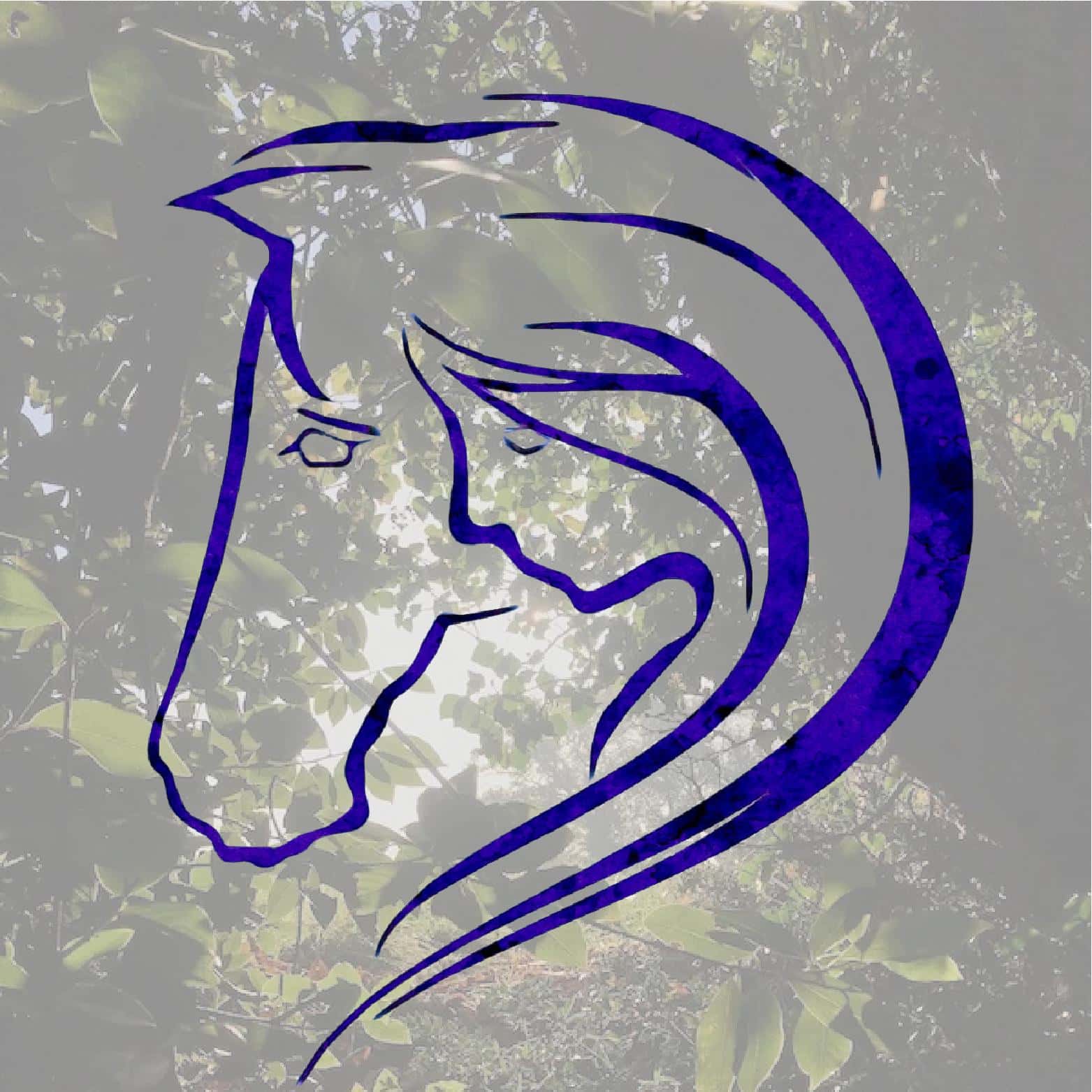Horses Go Better Barefoot
More and more horse guardians and equestrian competitors are discovering that barefoot horses with good feet are healthier and move better. The only reason that shoeing could be considered a benefit is because it has a numbing effect which might act as a quick fix, covering up internal pathologies. For this reason going barefoot can be a challenge. Horses who have been shod for a long time do adapt, their physiology can alter alarmingly, and retrieving comfort and healthy function can take patience and consistent management.
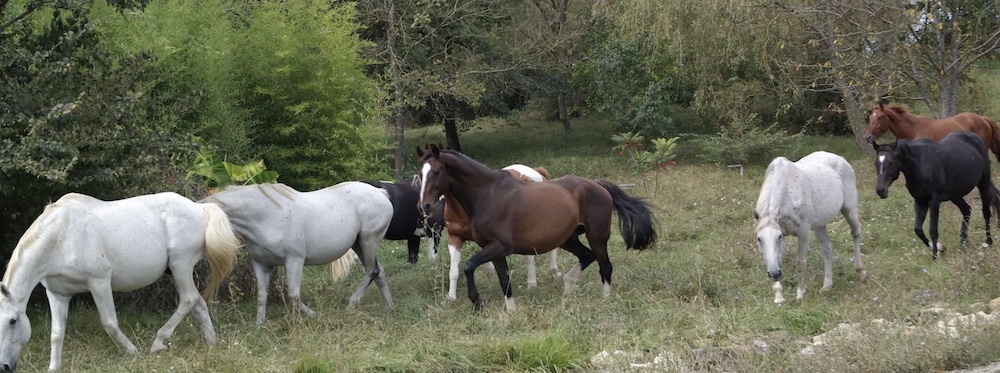
Every member of this holistic herd re-adapted to barefoot, with resilient feet and healthy function. Even those with pathologies such as navicular and chronic laminitis, and feet damaged by certain management practices as in flat racing and dressage.
What Can Damage Foot Function
Going barefoot definitely becomes more challenging when a horse’s foot function has been compromised. Such damage can happen for a variety of reasons:

- Shoeing with metal shoes, particularly in the first five years of the horse’s growth.
- Invasive trimming or lack of regular trimming.
- Hard training when the feet are still developing.
- Low fibre, sugar rich diet.
- Accidental damage from an incident.
Metal shoes disrupt correct weight loading in the horses feet as well as preventing the feet wearing themselves down. The structures which are naturally in contact with the ground (in particular the heels, frog and bars) are unable to connect and will begin to deform. Then even more function is lost. Metal shoes also restrict the flexion of the foot, and the horse’s ability to sense the ground. Attaching a hard, inflexible metal to living tissue also causes it to lose its own resilience and become soft and dependent.
Any form of damage can cause distortion of the structure of the horse’s feet. It may be in the soft tissue only, or go as deep as the bone structure. When the structure of the feet is affected, their function will also be diminished or altered, which sets up a negative cycle. As with all physiological systems, returning them to an optimal environment will stimulate them to improve and regain normal form and function. This is why going barefoot with correct trimming, horse boots if needed and a low sugar, high fibre diet is an excellent option for improving pathological conditions in horses feet.
Adaptation
A horse’s foot is highly specialised. It has been adapting as a result of natural selection, over at least 55 million years! Relics of metal horse shoes have been found approximately 2-3 thousand years ago. It seems clear that wild horses manage just fine on their own, and the issues come about from the demands of domestication and exploitation of the modern horse.
As with all physiological systems, returning them to an optimal environment will stimulate them to improve and regain normal form and function.
This is why going barefoot with correct trimming, horse boots if needed and a low sugar, high fibre diet is an excellent option for improving pathological conditions.
Horses living a balanced holistic life will move happily and naturally with unshod feet.
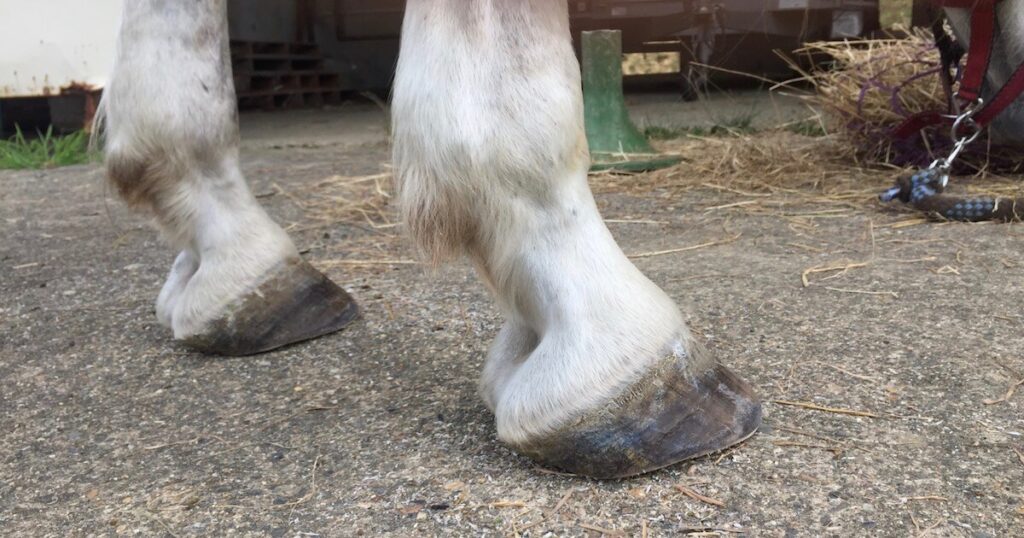
Understanding Barefoot
The best way to understand horse’s feet is to see them as one of the systems of the body, like the lymphatic or the digestive system. There are many dedicated researchers and trimming practitioners who are continually learning more about the holistic nature of equine feet. The tendency is certainly towards barefoot and away from traditional shoeing.
Some important points to consider:
- Horses will only achieve full function when their feet are comfortable.
- Sensitive feet will lose function and healthy structure is reduced.
- Horses feet help to pump the blood back to their heart, so their balance is integral to the health of the whole horse.
- The feet are weight carriers, shock absorbers and traction providers so their resilience is essential to the entire musculoskeletal system.
The Landing Debate
It is believed by many respected researchers and hoof trimmers that horses living and breeding successfully in the wild, and sound domestic horses land slightly heel first . Meaning that their weight comes into the back of their feet just before the rest of the foot. The idea is that they evolved to move this way because the structures at the back of the foot are capable of handling the horse’s weight and dissipating the energy.
There is also some argument for a perfectly flat landing, which feels right intuitively to me, and I am sure eventually more certainty will come. As with so many subjects in equestrianism, there are so many factors involved, it takes time to figure it all out. Some aspects of the biomechanics of horses feet are less controversial, and the toe-first landing is widely understood to be a negative reflection on equine foot health.
Healthy Foot Function
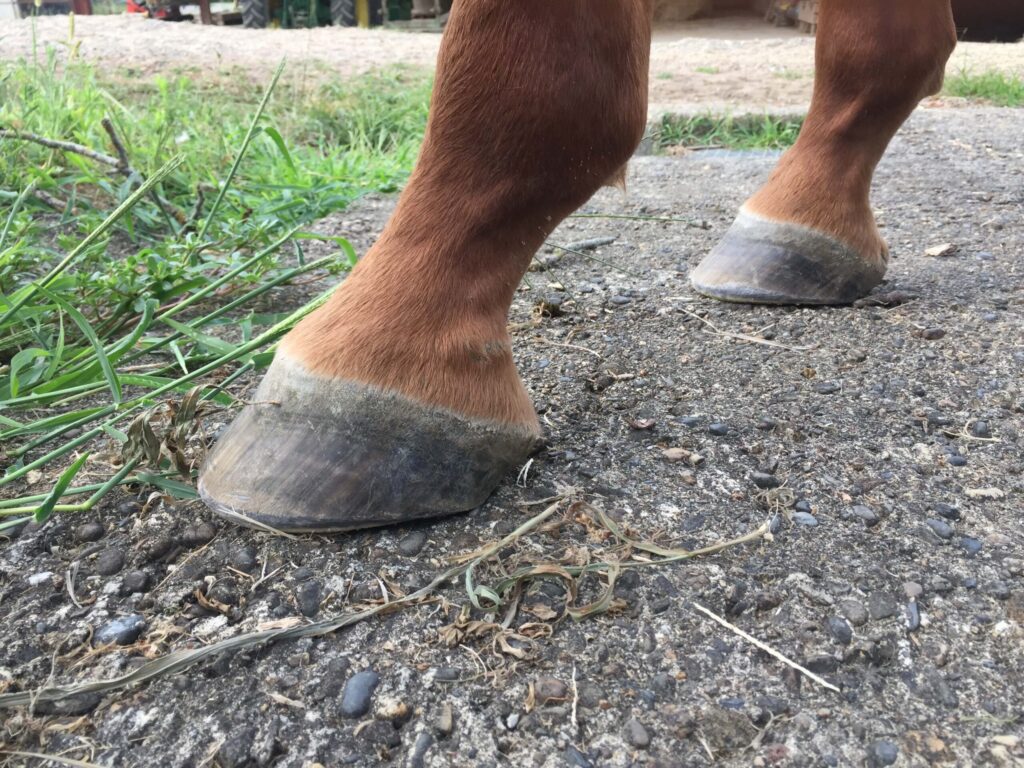
The larger the surface area at the back of the foot, the better. So large frogs and wide, low heels are to be encouraged.
Letting the heels become long and high forces the horse to put their foot down ‘toe-first’ and the impact of the stride will be taken through bone and soft tissue not adapted for it. This leads to pathologies like navicular and pedal osteitis.
These warmblood feet have never been shod and maintain themselves fairly well with an occasional tidy up.
Like any biological structure, the feet will reflect their environment. Shortcomings in the lifestyle of a horse, for example lack of movement and opportunity to wear the feet down can be made up for with trimming. The only issue is that the trim must reflect the wear that would happen naturally. Some shortcomings, such as too much sugar in the diet, are less easily compensated for. The quality of the hoof structures itself may suffer. A holistic lifestyle is much more likely to be able to fulfil all of a horse’s requirements.
The Quick Fix
Given the evidence why would anyone use metal shoes? For the straightforward reason that shoes solve all of the issues of artificial lifestyle and diet in one go. They are the perfect masks for sensitivity because they numb the foot. Horse lore will tell you that a horse’s foot should feel cold to the touch. In fact a horse’s foot should feel warm, just like the rest of their mammalian living body. Only a hot foot would feel warm with metal shoes on though, so when a shod foot is warm there really is a problem.
If instead of having to take the time, effort and cost to make sure the horse has:
- A biologically appropriate diet
- Is moving around enough
- Receives a suitable trim
… you only have to stick a set of shoes on and all of those problems go away. And as long as the tradition is supported by farriers and vets there is a good excuse not to dig too deeply. Usually it takes a problem too serious for the shoes to cover up to make owners think again. In these cases there are often miraculous recoveries.
Rehabilitation
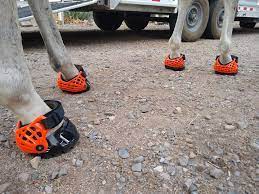
Rehabilitation is quite possible, no matter how old your horse is. It definitely helps to be prepared to take a more holistic route. If a horse is suffering from sensitivity they will need to wear hoof boots for working.
Staying on soft ground and even using extra padding might be necessary for a while. There are so many hoof boots on the market now, and solutions for your individual situation can be found.
Keep looking until you find the right trimmer and even start educating yourself. The more you understand, the more you can take responsibility and really care for your horse. Finding good horse pasture will make such a huge difference to your horses health. Horses are not evolved to eat the kind of grass the vast majority of pastures offer them. Neither are they adapted to consume cereals and highly processed feeds. Sensitivity in their feet means they will be unhappy about working and prone to metabolic problems. Even horses with genetically inferior feet can be comfortable if their diet is right.
Why It Is Difficult To Change
Like any degenerative process, the further it goes on, the harder it is to retrace the steps. Taking the shoes off a horse who has been wearing them a while is a major physiological shift. Especially during the period of development of the foot (up until five years or so). This is why going barefoot from the beginning with a younger horse is doing your horse a huge favour.
All horses are different, but the majority will suffer some serious pain. Mainly the frost-bite type pain of nerves that have been damaged. Many horse-owners take one look at that and have the shoes put back on straight away. But just because the pain is covered back up doesn’t mean the source is resolved. Can you imagine the daily damage that is being done to result in pain like that?
Farriers will say that it is only bad shoeing that causes damage and deformed feet, like the rather shocking example above. Of course it is true that the worse the farriery, the more damage the feet will sustain. Yet the fact that metal shoes obstruct correct loading and limit healthy flexion of the foot will happen however well they are fitted.
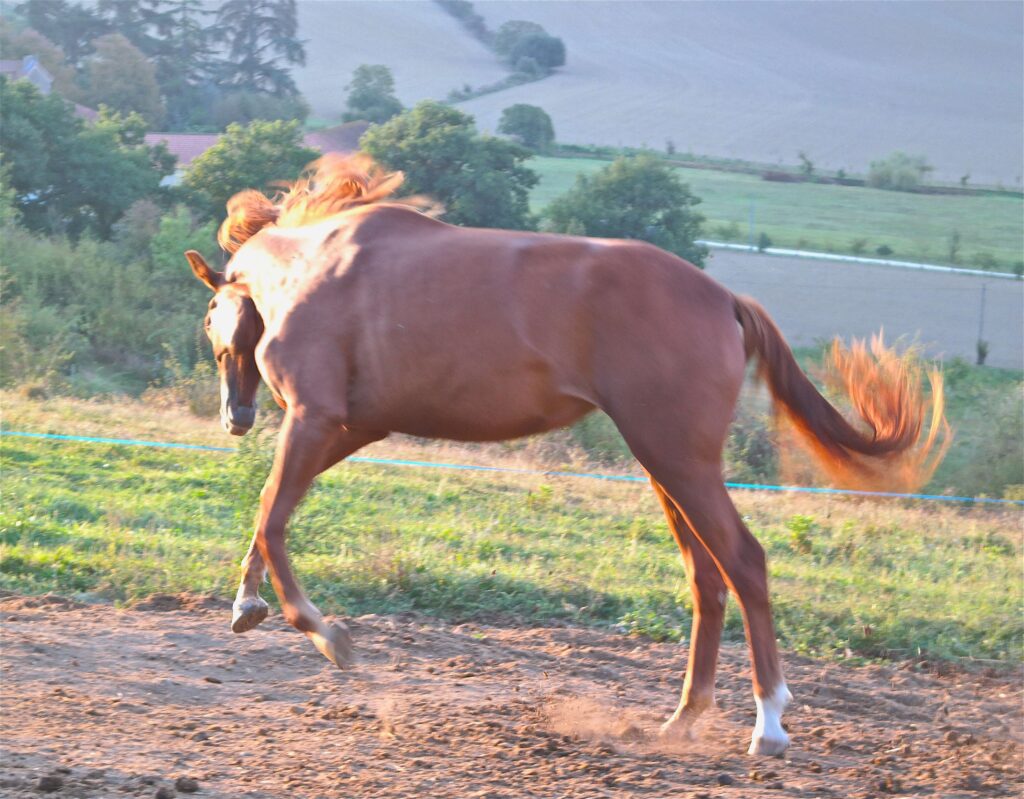
Quaramba is an Oldenburg mare who has never worn shoes. She tends to self maintain rather than needing frequent trims. Her feet are tough and healthy feet without sensitivity. Although we don’t compete, it is true that more and more horses bred for sport like her are being allowed to stay barefoot. Their performances are all the evidence that is needed.
